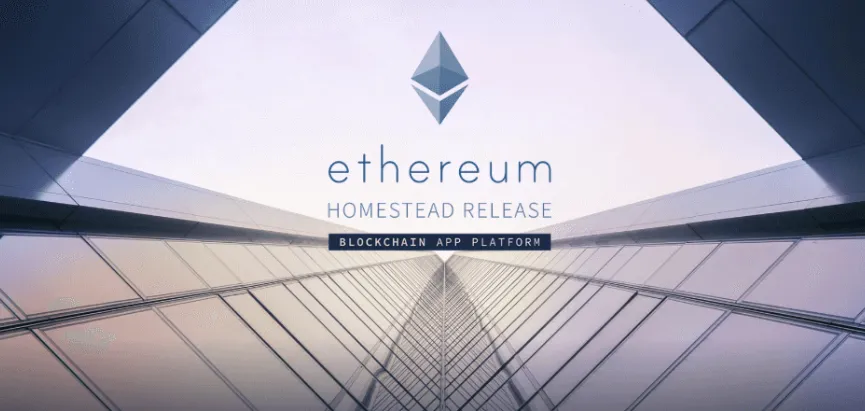 Since this market cycle, Bitcoin has been soaring, making Ethereum and some older 'value projects' increasingly weak, with ETH/BTC once hitting a bottom. This has become the strongest 'unresolved emotion' for many seasoned crypto enthusiasts, without exception. Both the bull and bear markets have been experienced, yet there remains an inability to let go of the stagnant ETH. It seems that dissatisfaction with ETH in the crypto community has reached its peak.
Since this market cycle, Bitcoin has been soaring, making Ethereum and some older 'value projects' increasingly weak, with ETH/BTC once hitting a bottom. This has become the strongest 'unresolved emotion' for many seasoned crypto enthusiasts, without exception. Both the bull and bear markets have been experienced, yet there remains an inability to let go of the stagnant ETH. It seems that dissatisfaction with ETH in the crypto community has reached its peak.
01
Has Ethereum's original intention changed? Although ETH and BTC each have different paths and there is not much direct conflict, most long-term holders of ETH since the bear market hope that ETH can outperform BTC, meaning they expect a good return on ETH/BTC. Based on previous experiences before this bear market, ETH has managed to outperform BTC most of the time.
Similar to the mentality of Ethereum community holders wanting to outperform BTC, Ethereum's original intention or differentiated development strategy is to take a path that the Bitcoin community has not taken and considers difficult: a blockchain-based smart contract application platform, and plans to explore blockchain expansion to bring scalability and performance, developing decentralized applications beyond digital gold.
Similar to some 'shanzhai' projects that had already emerged at that time, all wanting to improve Bitcoin, with differentiated strategies or to become a more successful Bitcoin.

If early crypto users had paid attention, they would have seen the above image of the Ethereum Foundation's website background, which clearly states a slogan: a blockchain application platform, which was the most accurate positioning given to Ethereum by the Ethereum community at that time. The background image seems to depict a towering building, perhaps signaling the expansion and construction of blockchain.
Now, some people believe that Ethereum's original intention has changed. Since the merge to a POS consensus mechanism, perhaps due to the price not rising, they attribute Ethereum's downtrend to the shift to the POS formula mechanism, believing that such a significant shift from POW to POS is a huge mistake. However, in reality, Ethereum's transition to POS was part of the design roadmap from the beginning, not a last-minute decision, and was a choice made under the demands of blockchain scalability and expansion for smart contract public chain platforms.
Recently, a major Bitcoin holder on social media published a chart showing the inflation rate of Ethereum after the merge, attempting to illustrate the erroneous path of Ethereum's merge with the rapid rise in inflation over the past six months. But soon, the rebuttal came, as Ethereum community users published the complete picture of this statistical chart, along with a comparison of Bitcoin's annual inflation rate (the ratio of new issuance to circulating quantity), making it even clearer. Initially, many people scoffed at Ethereum's unlimited issuance, believing it would lead to infinite inflation. The current reality is that Ethereum, through POS merge and EIP1559, not only maintains security but also controls inflation, which is far lower than Bitcoin's current inflation rate, and has a significant distance compared to other well-known POS public chains.
Ethereum has firmly secured its position as the second leader in Crypto, and has become a 'differentiated object' for many new public chain projects, with many projects aiming to become a better 'Ethereum'. It can be said that aside from adjustments in the details of its implementation, the Ethereum roadmap has not undergone significant changes, and its original vision has been gradually realized.
Recently, Vitalik responded on social networks to doubts about the foundation's output, along with 9 pieces of information related to ETH fundamentals.
Vitalik:
The ETH Foundation is compensating researchers and developers responsible for the following tasks.
(1) Ethereum no longer loses 5 million ETH per year to the proof-of-work mechanism (POW).
(2) Your current fees are very low.
(3) Your transaction will be packaged within < 30 seconds, instead of 1-30 minutes (eip-1559).
(4) zk technology allows people to maintain privacy while using ETH.
(5) Account abstraction technology will allow ordinary people to use ETH safely, without seed phrases or SBF-style central fault points.
(6) Local ETH events around the world, many of which barely mention the foundation's name.
(7) Since 2016, ETH has never gone offline due to DoS attacks or consensus failures.
(8) Various security measures (internal development and grants) have prevented many financial losses.
(9) Various libraries in the code you use (wallets, DeFi applications, etc.)
From another perspective, the reason Ethereum exists and is valued at over 300 billion USD may not solely come from its captured gas fees; more importantly, it represents the expansion and innovation in the crypto field, continuously accommodating Bitcoin's value overflow. Thus, in the previous two bull markets (2018, 2021), the ETH/BTC ratio surged, which is one of the main underlying logics for Ethereum's long-term outperformance.
In this market cycle, although Ethereum's fundamentals are good, I have noticed that many people only mention issues like the on-chain liquidity fragmentation of the Ethereum ecosystem and the competition from new public chains, while neglecting the most important thing: that is, the Ethereum ecosystem's capacity to accommodate Bitcoin's value overflow.
02
Is Bitcoin's unresolved dilemma an opportunity for Ethereum? In terms of design, Bitcoin is undoubtedly a 'god-level' creation, but such a system is not 'perfect'. After all, many projects aim to have it all, appearing perfect but in reality being complex and riddled with vulnerabilities, making it difficult to break through quickly.
Satoshi Nakamoto left some unresolved questions or regrets for Bitcoin, waiting for future generations to optimize. For instance, the decreasing issuance and the contradiction with ecological development threaten the sustainability of the Bitcoin system.
In simple terms, as Bitcoin continuously reduces its output until it reaches its limit, the increasingly low inflation rate will make Bitcoin's scarcity a favorable factor for price increases. However, for the Bitcoin system, this may not be the case, as the reduction inevitably leads to decreased income for POW miners, which could also lower their motivation and subsequently affect the system's security and stability.
Of course, the Bitcoin community proposed a solution, which is to develop the Bitcoin ecosystem. When future halving leads to insufficient miner income, the prosperity of the Bitcoin ecosystem can compensate for the reduced system rewards, continuously incentivizing miners to provide strong system protection. This is also an experience learned from the Ethereum community's blockchain expansion route. However, high prices and fees, along with the low efficiency of the mainnet, pose significant sustainability challenges for the Bitcoin ecosystem.
The problems with Bitcoin remain 'on the table', and the only solution currently is to let Bitcoin keep rising, then there will naturally be no problem. However, this is clearly unlikely. Thus, when capital pushes Bitcoin towards a bottleneck, its value will overflow to other blockchains. For now, the only large-scale project capable of accommodating most of Bitcoin's value overflow is Ethereum, with no alternatives.
03
Bitcoin L2 and Ethereum L2 are now on the same boat. The current development of the Bitcoin ecosystem is indeed flourishing, with many teams bringing various scaling solutions, especially those borrowed from Ethereum's Layer 2 solutions. It can be said that Ethereum's Layer 2 pioneering exploration is leading Bitcoin's Layer 2 scaling solutions. Bitcoin Layer 2 and Ethereum Layer 2 may have different paths but ultimately aim for the same destination; some even say Ethereum is Bitcoin's largest testnet.
Of course, there are still some challenges with Bitcoin Layer 2, such as difficulty inheriting Bitcoin's security, and Bitcoin's slow block generation speed affecting Layer 2 transaction settlement efficiency, etc. Therefore, idle BTC, if it wants to participate in DeFi, will still choose to cross over to the Ethereum chain for reliability and security.
According to CryptoFlows data, Bitcoin has transferred approximately 3.8 billion USD in assets to Ethereum mainly through stablecoin bridging, which does not include Layer 2. The inflow to Ethereum mainnet accounts for the vast majority of Bitcoin's cross-chain output, indicating the recognition of on-chain funds by Ethereum. In the future, with the continued development of BitcoinFi, the Ethereum ecosystem is bound to gain more inflow share.
In fact, if we change our perspective, in the era of multi-chain interconnection and chain abstraction, where Web3 applications are landing on a large scale, the seamless interoperability between the vast crypto ecosystem and the current state of Ethereum is perhaps becoming the largest sidechain of Bitcoin or a broad Layer 2? The best DeFi protocols in the Ethereum ecosystem are helping to activate dormant Bitcoin funds.
Whether it's a scaling solution on the same boat or cross-chain movement of funds, the future of Bitcoin and Ethereum seems to be increasingly intertwined.
From the current perspective, Ethereum's original intention has not changed; everything that should have been realized has been. The only change has been the 'fickle' holders who couldn't resist temptation. In the context of a depleted liquidity environment, the crypto narrative has shrunk, and pursuing memes is understandable (economic downturns lead to luck-chasing at the village entrance), but the upcoming global interest rate reduction cycle leading to a gradual release of liquidity may bring change. Don't forget that the adoption of crypto assets and the landing value of Web3 applications will eventually return.
As the leaders of crypto assets, the future intertwined relationship between Bitcoin and Ethereum is neither hostile nor black-and-white. Regardless of which camp the crypto community stands in, it should stop internal strife and 'biting the hand that feeds' and strive together towards the broader next generation of the internet for mass adoption. I hope the upcoming ETH will not disappoint.






